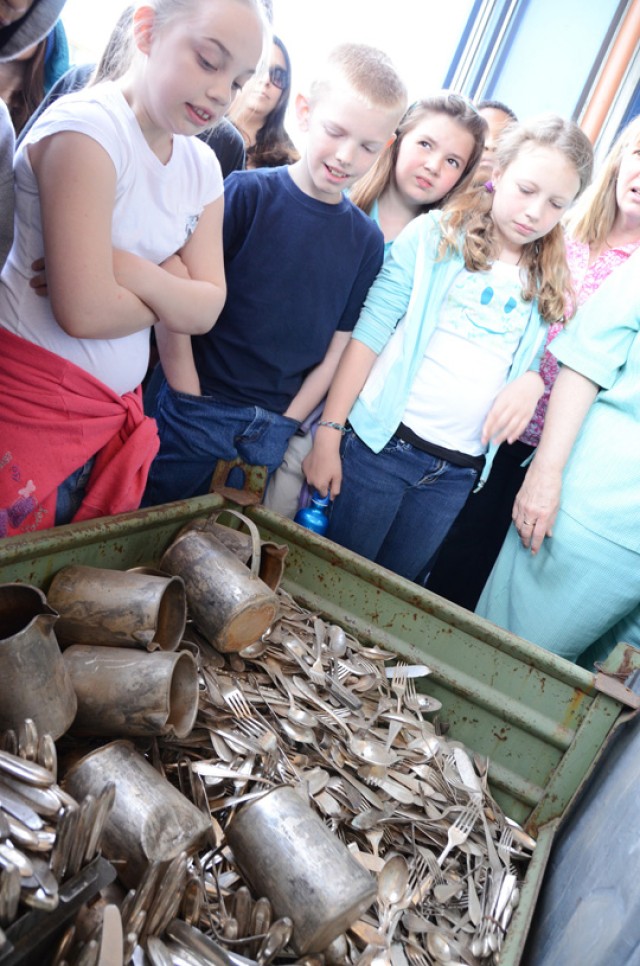STEINFELS, Germany -- Leilani Castillo, 11, strained her neck to peer upward at the multitude of machines sorting a mix of plastic, glass, aluminum and everyday trash.
"So all of the plastic items are on the conveyer belt and a big magnetic machine pulls any metal cans they may have got mixed in there," explained Castillo. "Then whatever is left is sorted by the workers here."
Castillo, along with more than 40 additional students from Grafenwoehr Elementary School toured Bergler Sorting Plant, May 10, gaining a plethora of knowledge on the process of sorting recyclables.
For two hours, students stepped into a green think tank as they answered questions on the importance of recycling, how the process works and how compost soil is made.
The Bergler Sorting Plant sorts 4,500 tons of metal, plastics, wood and compostable items every month, including items from Main Post, Rose Barracks and the surrounding housing areas. All sorted items are packaged and sent to various companies for the final stage of recycling.
"With the metal, they melt all of it and then make new things out of it like silverware," said 10-year-old Sienna Hager. "And all the plastics are put into cubes then they melt it and make new stuff like bottles and bags."
"Plastic can also be used for energy," piped in 10-year-old Xander Mattkins.
The sorting plant was large and contained everything that could be recycled, including the kitchen sink. Scrap metal, aluminum cans and numerous other materials were stacked sky high, waiting to be compacted, sorted, distributed and made into new products. Students learned firsthand the intense process of sorting and recycling and the negative impact that waste has on the natural environment.
The U.S. alone produces half of the world's garbage, including many items that could have been recycled, although it accounts for only six percent of the population.
"We're running out of landfills and space to put them," said 10-year-old Alex Vlad.
Vlad explained the importance of protecting the earth for future generations and said recycling was an easy task, yet had a significantly positive impact on the environment.
"Unless we start to colonize the moon, we aren't going anywhere," said Vlad. "We only have one planet and we need to take care of it."








Social Sharing